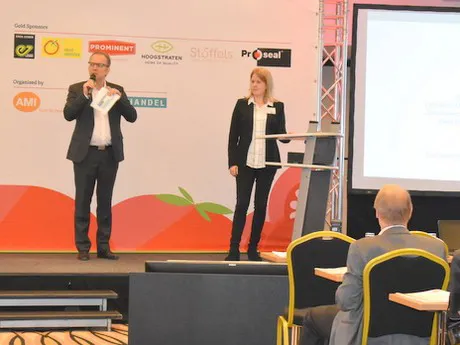
of the day, Mrs. Kristin Jürkenbeck of the University of Göttingen
Ignorance
Mrs. Kristin Jürkenbeck of the University of Göttingen described the behaviour of today's consumers. Price and taste, as well as colour are the most important characteristics of tomatoes. 36 percent of German consumers are willing to spend more on regional produce and about 57 percent of consumers today are satisfied with the taste of tomatoes. Nevertheless, the number of so-called hobby growers within the German market is expanding. Although today's consumer is critical regarding tomatoes, there is still much ignorance. There is also a lot of ignorance about storage and its influence on the taste. Approximately 2 out of 5 consumers still store tomatoes in the fridge, although they clearly lose their taste that way.
Waste reduction
Nico van Vliet from Dutch seed supplier De Ruiter Seeds spoke on reducing waste across the supply chain. On the one hand, seed suppliers should define clear breeding targets for all tomato varieties. On the other hand, the trade should put down fewer claims and the food retail (LEH) could up their sales through a better presentation of goods. And lastly, the consumer also has certain responsibilities: When he or she makes optimal use of the products, less waste will be produced. Above all, it is important for the breeders to find out the exact demand by means of data collection before a new variety is actually offered in the market. Furthermore, growers should not harvest the products too early and make sure there are fewer losses during harvesting, packing and transport.
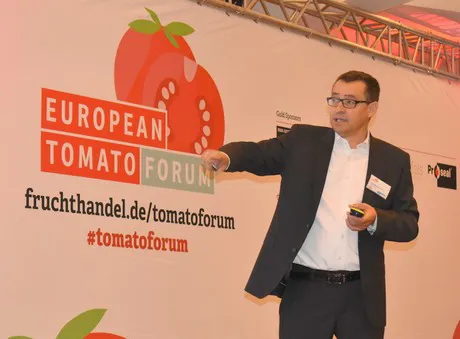
In his presentation, Mr. José Manuel Estévez of the La Palma SCA Producer Cooperative spoke of the long history of tomato breeding. Since the launch of the first Josefina cherry tomato in 1991, the trend has clearly been shifting from large tomatoes with a low Brix value to smaller varieties with a high Brix value. According to Mr Estévez, flavour, texture, colour and taste are the four most important requirements of the average consumer. However, the biggest challenge remains to successfully combine these aspects with a corresponding Brix value. At the end of the lecture, Mr Estévez presented the cooperative's latest variety: the Essentia.
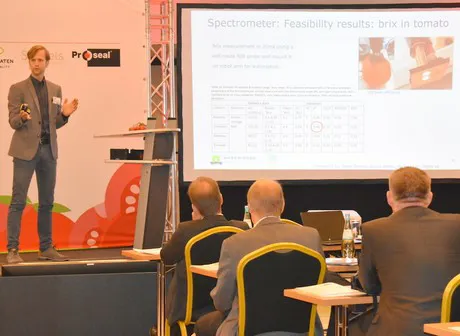
Robotics during the production process
A research group of Wageningen University (WUR) has been working on the agricultural use of robotics for several years. According to spokesman Rick van de Zedde, augmented reality will in future provide multiple forms of support during production: Examples include assistance with harvesting, researching diseases and data collection using sensors without damaging the plants. This data collection could also be used for post-harvest purposes, including quality measurements and brix values.
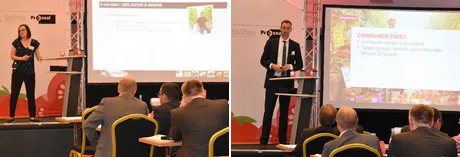
Jan Opschoor and Wim van den Berg from Prominent Tomatoes are demanding a common conduct by their producers, and strive for joint investments. This producer and marketing company offers tasty tomatoes from their own fields year-round, with the aid of an optimal water cycle. Furthermore, the company relies heavily on targeted marketing focused on two consumer groups: traditional families and millennials. Storytelling with a strong focus on sustainability as well as an attractive presentation and of course an excellent taste, should win over both customer groups for Prominent Tomatoes.
Pesticides
In France, too, tomatoes are by far the most consumed vegetables, according to Marine Bougeard of Prince de Bretagne. The French consumer is typified by an increasing fear of pesticides and a greater focus on transparency and traceability. Because of this, the company has set itself the goal of launching a new way of production, in between the conventional and the organic cultivation. In addition to this, there are two major challenges facing the French market: despite the different perspectives and labels of the individual producers, a common connection should be ensured. Furthermore, distribution should be improved and consumers found it particularly important to be better informed.
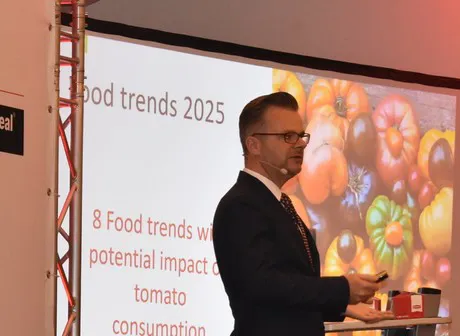
Joint investments
Marketing Manager Jan Engelen of the Coöperatie Hoogstraten (Belgium) describes the successful marketing measures of this cooperative. In 2016, their entire marketing presence was redefined and only the private label and the Flandria label were presented as product lines. However, future challenges in the tomato market are numerous: Engelen mentions online trade, campaigns against food waste and the declining use of plastic packaging materials. It is therefore all the more important to innovate together, by means of consumer studies, clear target groups and a prominent focus on taste.
Dr. Wouter Verkerke from the University Wageningen (WUR) started an independent consumer panel to find out what consumers think is most important. The results are particularly important for the B2B and B2C sectors. In the B2B area, taste and health aspects clearly represent an added value within today's industry, and new tastes and techniques continue to be presented.
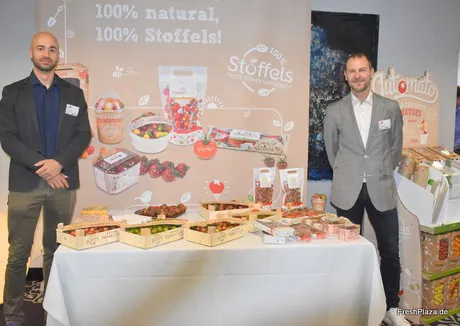
Personalized marketing
As Managing Partner of Neurather Gärtner and a prominent member of the Landgard Group, Carsten Knodt has his own views on today's industry. He observes an increasing demand for regional products as well as year-round delivery. As a result, the firm now also has a production area under lights (7.5 ha). In addition to innovations in cultivation, Landgard eG relies heavily on personalized marketing and storytelling to ensure that the product has a face and the consumer's needs for information are covered. According to Knodt, the challenge of the future would be organic production, reduction of energy consumption as well as a solution for the impending shortages of skilled workers.
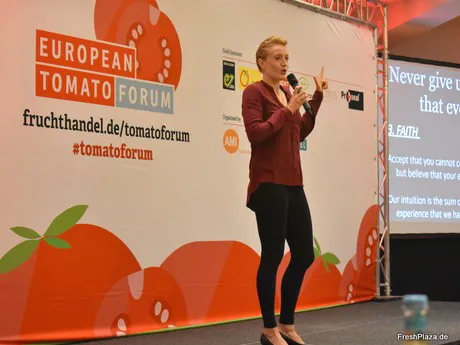
Further growth in Germany?
Hans-Christoph Behr of the AMI Market Research Group described tomato consumption in Germany. From December to March, production of German goods is still very low: due to this fact and the great need for regional products, there is still enough potential for German tomatoes. Furthermore, the tomato sector continues to grow in terms of sales, although tomato consumption is already dominating the scene. Differentiation within the tomato sector is still taking place, Behr claims. He envisages further growth of German production and warns that the premium segment needs to be protected because of copy-cat products.
